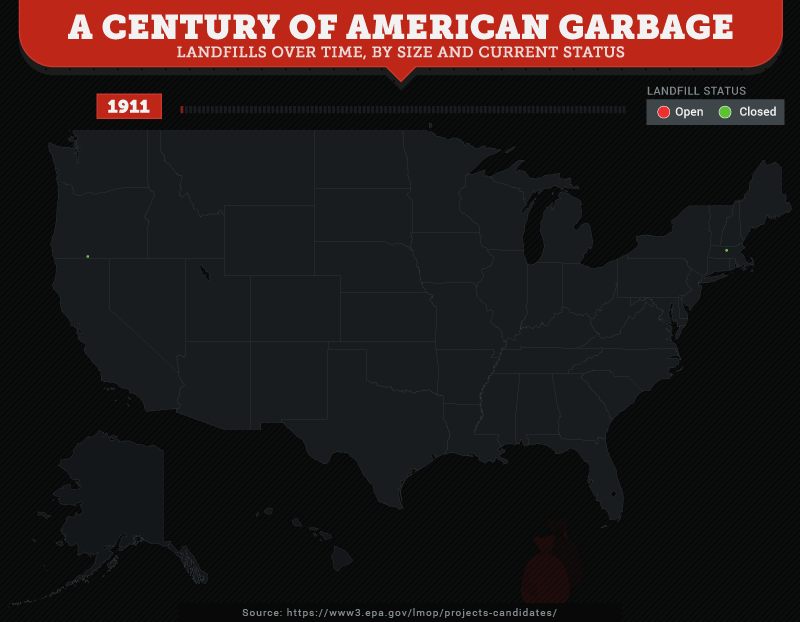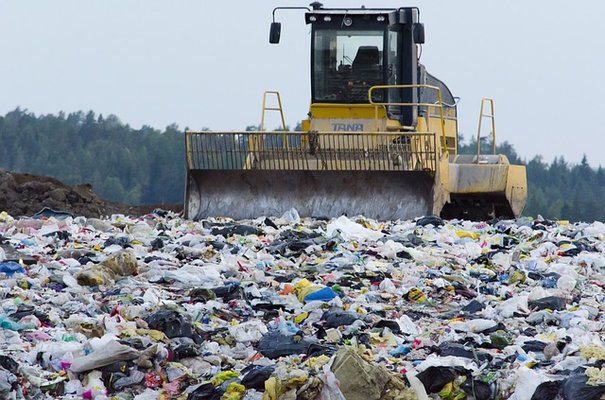America, land of the … landfills? That’s what we’ve turned into since 1937, when the first sanitary landfill opened in Fresno, California. Today, there are nearly 2,000 active landfills across the country and hundreds more are at capacity, a stark reminder of just how massive our waste problem has become.
This visualization from SaveOnEnergy shows how quickly landfills have boomed across the country, particularly in the past 30 years.

One thing we have to remember when looking at this is that trash, and landfills, are a human invention. Waste does not exist in nature, in any form. Everything that is produced in a healthy ecosystem is consumed or decomposed by another organism, or the sun. That is because, in a natural system, everything has value to something.
For most of human history, we also lived in this system, with our waste being part of this natural cycle. It was only with the advent of industrialization — when we began to produce goods that did not easily biodegrade — that waste, in its modern form, emerged. Instead of figuring out how to reuse these byproducts, we went with the cheaper option: landfills.
Even then, for much of the era after the industrial revolution, waste was relatively manageable. What changed this were two things – the invention of plastic, a material that does not biodegrade and is incredibly cheap to produce (when its environmental impacts are, of course, not factored in). Soon, cheap plastic made its way into homes as the era of “throw-it-away” began after World War II. Disposable cups, throw-away plastic TV dinner trays, and masses of styrofoam fast-food containers that quickly spread not only across America, but also the globe. Today, it is packaging from e-commerce that is clogging up our waste stream.
And with it comes a boom in landfills. And that’s if we’re lucky and the waste management system works. As the growing plastic gyres in the oceans prove, too often our waste ends up in nature.
It is obvious that the status quo cannot continue. Creating waste on a planet with finite resources is not only foolish, but it’s also unsustainable.
We need to return to how things were in nature, where waste does not exist, by creating a circular economy and committing to zero-waste systems. According to the Ellen T. MacArthur Foundation, one of the organizations pushing most strongly for companies and governments to adopt circular economy principles: “A circular economy is one that is restorative and regenerative by design, and which aims to keep products, components and materials at their highest utility and value at all times, distinguishing between technical and biological cycles.”
Thus, in a circular economy, nearly every consumer good would be recyclable, repairable or compostable, eliminating the need for so many landfills. The good news? We’re getting there. Recycling rates are on the rise, hitting 34 percent, and more and more cities are adopting citywide composting and waste reduction programs. The bad news? We need that number to get up to 100 percent. Otherwise, more and more waste will end up in more and more landfills across the country. And more landfills are the last thing we need.
Source: Triple Pundit
Women of Green is TURNING UP THE VOLUME of the feminine voice on the planet in order to create the world we know is possible.
